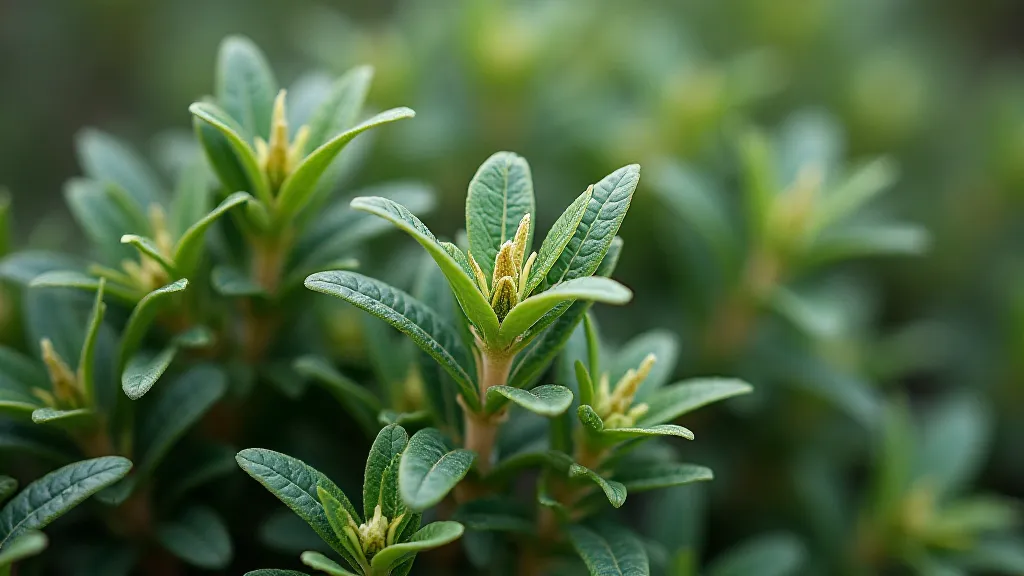The Cartographer's Herb: Finding Your Way with Winter Savory
There’s a certain romance associated with maps. Not the digital kind, readily available on our phones, but the old-fashioned maps, the ones drawn on parchment, painstakingly detailed and smelling faintly of aged paper and forgotten journeys. My grandfather, a retired cartographer, had a vast collection. I remember spending hours as a child, tracing the intricate lines with my finger, imagining the expeditions that brought those landscapes to life. He used to tell me that a good map wasn’t just about showing where things were; it was about understanding the land, respecting its secrets, and navigating it with grace. He’s gone now, but the feeling of that shared history lingers, tied to those maps and, unexpectedly, to a small, unassuming herb: Winter Savory (Satureja montana).
Winter Savory isn't a plant you’ll typically find in a suburban garden. It’s a rare herb, a member of the mint family, but boasting a much more intense, peppery flavor than its common cousins. Its tiny leaves, a deep evergreen green, cling stubbornly to a compact, woody shrub. It has a quiet resilience, an understated beauty that mirrors the qualities I admired in my grandfather. He had a peculiar habit, he would tell me, of carrying a small pouch of dried Winter Savory on his expeditions. "A little bit of home," he’s called it. But later, I learned it was more than just comfort; it was an ancient tradition.

A History Rooted in Navigation
The connection between Winter Savory and navigation stretches back millennia. Ancient peoples, particularly in regions like the Mediterranean and the Middle East, recognized the herb’s distinct aroma and its ability to endure harsh conditions. The Romans, masters of engineering and empire building, often included Winter Savory in their provisions for surveying and military expeditions. It wasn’t just the flavor they valued; its strong, lingering scent, even in humid or smoky environments, could be used as a natural marker, helping travelers retrace their steps or orient themselves in unfamiliar territory. Think of it as a botanical breadcrumb trail, a tangible link to the path they had taken.
The name "Savory" itself likely derives from the Old French "savour," meaning "flavor," but the "winter" prefix distinguishes Satureja montana from the more common summer savory (Satureja hortensis). Winter Savory retains its fragrance and flavor throughout the colder months, a crucial advantage for travelers reliant on its scent for direction. It's a testament to the cleverness of those early botanists and explorers who discovered its unique properties. Imagine the dedication required to identify such a subtle, yet vital, resource amongst the vastness of the landscape.
Cultivating a Piece of History
Growing Winter Savory presents a unique challenge, adding another layer of appreciation for this remarkable herb. It's not a plant that thrives on neglect; it demands a little understanding and respect. It prefers well-drained, slightly alkaline soil and a sunny location. Unlike many herbs, it's not easily propagated from cuttings; seed propagation is the most reliable method, although it can be slow and requires patience. The tiny seeds need light to germinate, so surface sowing is essential. Think of tending to a Winter Savory plant as tending to a tiny piece of history, a living connection to the cartographers and explorers of old.
The rewards, however, are worth the effort. A mature Winter Savory shrub is a miniature landscape in itself, its tiny leaves providing a vibrant splash of evergreen against the muted tones of a garden. Its fragrance is powerful and intoxicating – a blend of pepper, thyme, and a hint of pine. And unlike many culinary herbs, Winter Savory retains its flavor intensity even when dried. It’s a versatile ingredient in the kitchen, lending a savory depth to stews, sauces, and roasted meats. It’s also a fascinating addition to herbal teas – a warming, invigorating brew that carries the echoes of ancient journeys.

A Culinary and Medicinal Treasure
Beyond its flavor, Winter Savory boasts a long history of medicinal use. Ancient herbalists valued it for its antiseptic, digestive, and expectorant properties. It was used to treat coughs, colds, and digestive ailments. While modern scientific research is limited, preliminary studies suggest that Winter Savory may possess antioxidant and antimicrobial activity. Like many ancient remedies, its efficacy is likely tied to a holistic approach to wellness – a deeper connection to nature and a respect for the subtle power of plants.
The craftsmanship involved in traditional herbalism, much like the skill of a cartographer meticulously drawing a map, is often overlooked. Each step, from identifying the plant to drying and preserving it, requires knowledge, precision, and a deep understanding of the natural world. It’s a connection to a lineage of healers and herbalists who have relied on the wisdom of plants for generations. And just as a well-crafted map can guide you through unfamiliar terrain, a carefully prepared herbal remedy can support your body’s natural healing processes.
Preserving the Legacy
The rarity of Winter Savory today is a reminder of the importance of preserving botanical heritage. As landscapes are transformed and traditional knowledge fades, plants like Winter Savory risk being lost forever. Supporting sustainable nurseries that specialize in uncommon herbs is one way to help ensure their survival. And perhaps, by cultivating a small patch of Winter Savory in our own gardens, we can reconnect with the wisdom of the past and contribute to a more resilient future.
I often find myself thinking of my grandfather, tracing the lines of his old maps, and remembering his stories of adventure and exploration. He instilled in me a profound appreciation for the power of observation, the importance of detail, and the beauty of the natural world. And now, as I tend to my own small patch of Winter Savory, I feel a sense of connection – to him, to the cartographers of old, and to the enduring legacy of this remarkable herb – the cartographer's herb, a tiny testament to the human spirit's ability to navigate both the physical and the metaphorical landscapes of life. Its scent evokes not just a culinary experience, but a journey through time, a reminder of the quiet wisdom hidden within the seemingly insignificant corners of our world.






